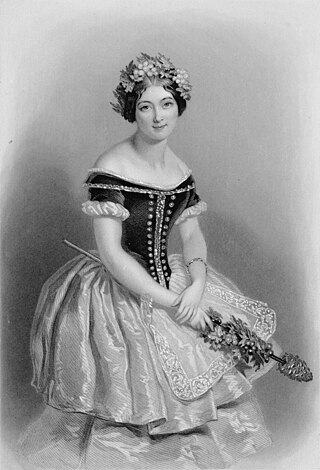
Giselle, originally titled Giselle, ou les Wilis, is a romantic ballet in two acts with music by Adolphe Adam. Considered a masterwork in the classical ballet performance canon, it was first performed by the Ballet du Théâtre de l'Académie Royale de Musique at the Salle Le Peletier in Paris on 28 June 1841, with Italian ballerina Carlotta Grisi as Giselle. It was an unqualified triumph. It became hugely popular and was staged at once across Europe, Russia, and the United States.

Marius Ivanovich Petipa, born Victor Marius Alphonse Petipa, was a French and Russian ballet dancer, pedagogue and choreographer. Petipa is one of the most influential ballet masters and choreographers in ballet history.
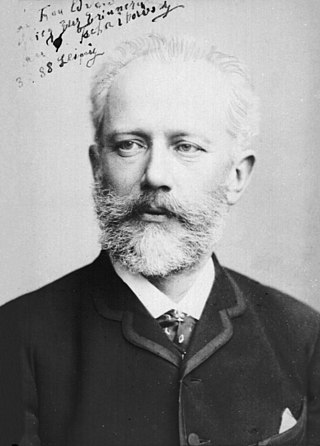
The Sleeping Beauty is a ballet in a prologue and three acts to music by Pyotr Ilyich Tchaikovsky, his Opus 66, completed in 1889. It is the second of his three ballets and, at 160 minutes, his second-longest work in any genre. The original scenario was by Ivan Vsevolozhsky after Perrault's La belle au bois dormant, or The Beauty Sleeping in the Forest; the first choreographer was Marius Petipa. The premiere took place at the Mariinsky Theatre in St. Petersburg on January 15, 1890, and from that year forward The Sleeping Beauty has remained one of the most famous of all ballets.
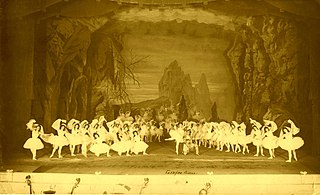
La Bayadère is a ballet, originally staged in four acts and seven tableaux by the French choreographer Marius Petipa to music by Ludwig Minkus and libretto by Sergei Khudekov. The ballet was staged for the benefit performance of the Russian Prima ballerina Ekaterina Vazem, who created the principal role of Nikiya. La Bayadère was first presented by the Imperial Ballet at the Imperial Bolshoi Kamenny Theatre in St. Petersburg, Russia, on 4 February [O.S. 23 January] 1877. From the first performance the ballet was hailed by contemporary critics and audiences as one of the choreographer Petipa's masterpieces, particularly the scene of act II The Kingdom of the Shades, which is one of the most celebrated pieces in all of classical ballet.
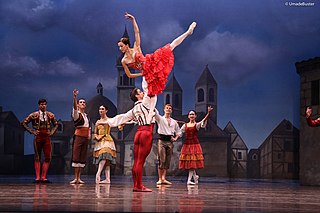
Don Quixote is a ballet in three acts, based on episodes taken from the famous novel Don Quixote de la Mancha by Miguel de Cervantes. It was originally choreographed by Marius Petipa to the music of Ludwig Minkus and first presented by Moscow's Bolshoi Ballet on 26 December [O.S. 14 December] 1869. Petipa and Minkus revised the ballet into a more elaborate and expansive version in five acts and eleven scenes for the Mariinsky Ballet, first presented on 21 November [O.S. 9 November] 1871 at the Imperial Bolshoi Kamenny Theatre of St. Petersburg.
Paquita is a ballet in two acts and three scenes originally choreographed by Joseph Mazilier to music by Édouard Deldevez and Ludwig Minkus. Paul Foucher received royalties as librettist.

Fiametta or Fiammetta, is a ballet in four acts and four scenes, choreographed by Arthur Saint-Léon to music by Ludwig Minkus, first presented by the Ballet of the Moscow Imperial Bolshoi Theatre on November 12–24, 1863 at the Moscow Imperial Bolshoi Theatre, Moscow, Russia, with Anna Sobeshchanskaya as Fiametta.
Camargo is a grand ballet in three acts and nine scenes, with choreography by Marius Petipa and music by Ludwig Minkus. The libretto by Jules-Henri Vernoy de Saint-Georges and Marius Petipa is based on an incident in the life of the 18th-century dancer Marie Camargo, in which she and her sister Madeleine were abducted by the Comte de Melun in May 1728 and taken to his mansion.
Frizak the Barber is a comic ballet in one act, with choreography by Marius Petipa and music adapted by Ludwig Minkus from themes derived from Italian opera.
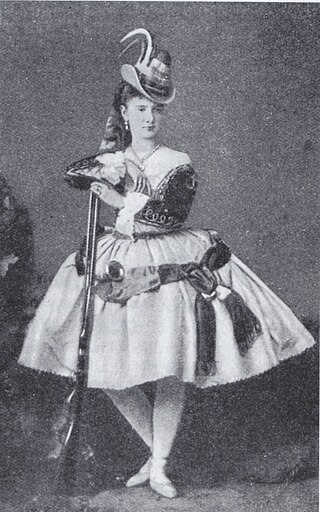
The Bandits is a grand ballet in two acts and five scenes with prologue, choreographed by Marius Petipa to music by Léon Minkus. The libretto by Marius Petipa is based on Miguel de Cervantes' novella La gitanilla.
Roxana, the Beauty of Montenegro is a fantastic ballet in four acts, with choreography by Marius Petipa and music by Ludwig Minkus. Libretto by Sergei Khudekov and Marius Petipa.
Zoraiya, the Moorish Girl in Spain is a grand ballet in 4 acts/7 scenes, with choreography by Marius Petipa and music by Ludwig Minkus.
Night and Day is a fantastic ballet in 1 act/3 scenes, with choreography by Marius Petipa and music by Ludwig Minkus.
Florida is a ballet in three acts and five scenes, with libretto and choreography by Marius Petipa and music by Cesare Pugni. The work was first presented by the Imperial Ballet at the Imperial Bolshoi Kamenny Theatre on January 10/22, 1866, in St. Petersburg, Russia, with Mariia Surovshchikova-Petipa as Florida.
Mlada is a ballet in 4 Acts/9 Scenes, with choreography by Marius Petipa, and music by Ludwig Minkus.
Pâquerette is a ballet in three acts, with choreography by Arthur Saint-Léon and music by François Benoist.

Le Diable à quatre is a ballet in two acts and three scenes, with choreography by Joseph Mazilier, music by Adolphe Adam, and libretto by Adolphe de Leuven, first presented by the Ballet of the Académie Royale de Musique on 11 August 1845, with Carlotta Grisi and Lucien Petipa.
Nénuphar is a ballet fantastique in one act, with choreography by Marius Petipa and music by Nikolaï Krotkov (1849-19..). First presented by the Imperial Ballet on November 11/23, 1890 at the Imperial Mariinsky Theatre in St. Petersburg, Russia. Principal dancers: Carlotta Brianza

Ludwig Minkus, also known as Léon Fyodorovich Minkus, was an Austrian composer of ballet music, a violin virtuoso and teacher.
Les Aventures de Pélée is a ballet in three acts and five scenes with choreography by Marius Petipa and music by Ludwig Minkus, with additional music adapted from works by Léo Delibes. The libretto by Marius Petipa is derived from the Greek Myth concerning the Goddess Thetis and the circumstances surrounding her marriage, arranged by Jupiter, to the mortal Peleus.









